
Red Hot Poker (Kniphofia Uvaria 'Grandiflora') Perennial Flowers perennials, Red hot poker
Where to Plant Planting Tips Care Pests and Problems Propagation This herbaceous perennial produces flowers that are both whimsical and architectural. Also known as torch lily, red hot poker blooms intermittently from late spring until fall, adding bold texture and color to the garden.

Primula vialii Red Hot Poker View All Perennial Plants Perennial Plants Gardening
Kniphofia caulescens, also known as Red Hot Poker or Torch Lily, is an attractive perennial known for its striking flowers. It is distinguished by its tall, upright flower spikes and grass-like foliage. The flowers are tubular and arranged densely on the spikes, creating a vivid display. Native: Native to South Africa, it is found in.
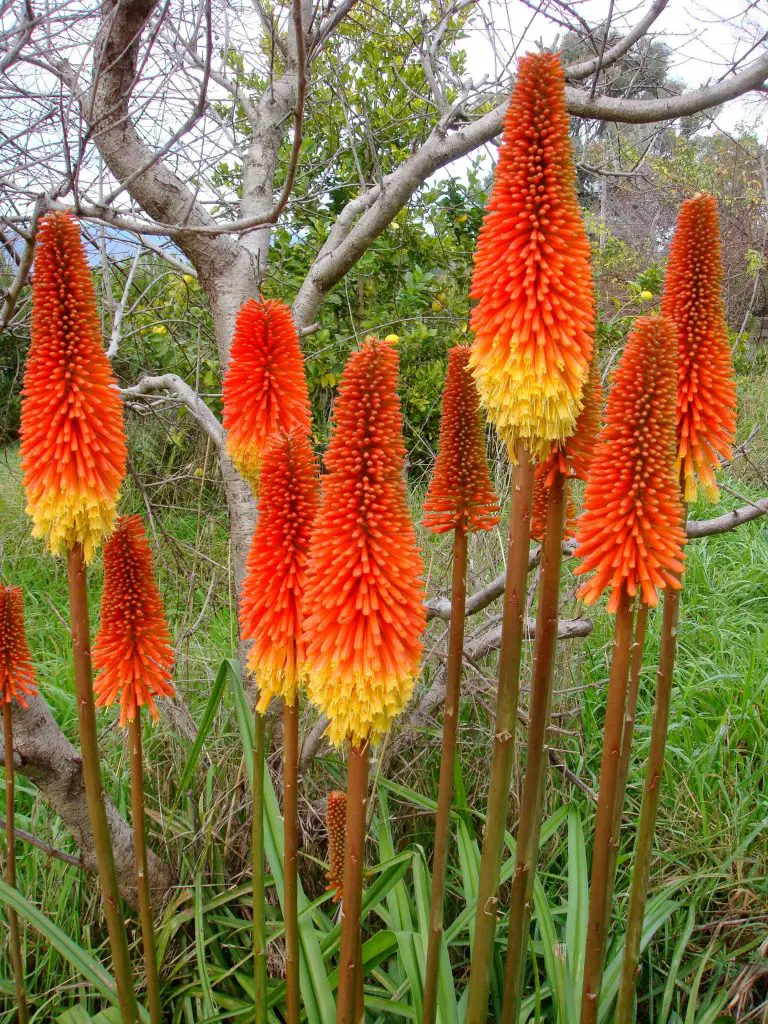
Kniphofia (Red Hot Pokers; Torch Lily; Tritoma) A to Z Flowers
Kniphofia, commonly known as Torch Lily or Red Hot Poker, never fails to make a bold statement in the garden with its brilliant show of bright-colored, dense, erect spikes resembling glowing pokers or torches. What is Red Hot Poker? Red Hot Poker is a striking rhizomatous perennial native to the sunny meadows and open slopes of South Africa.
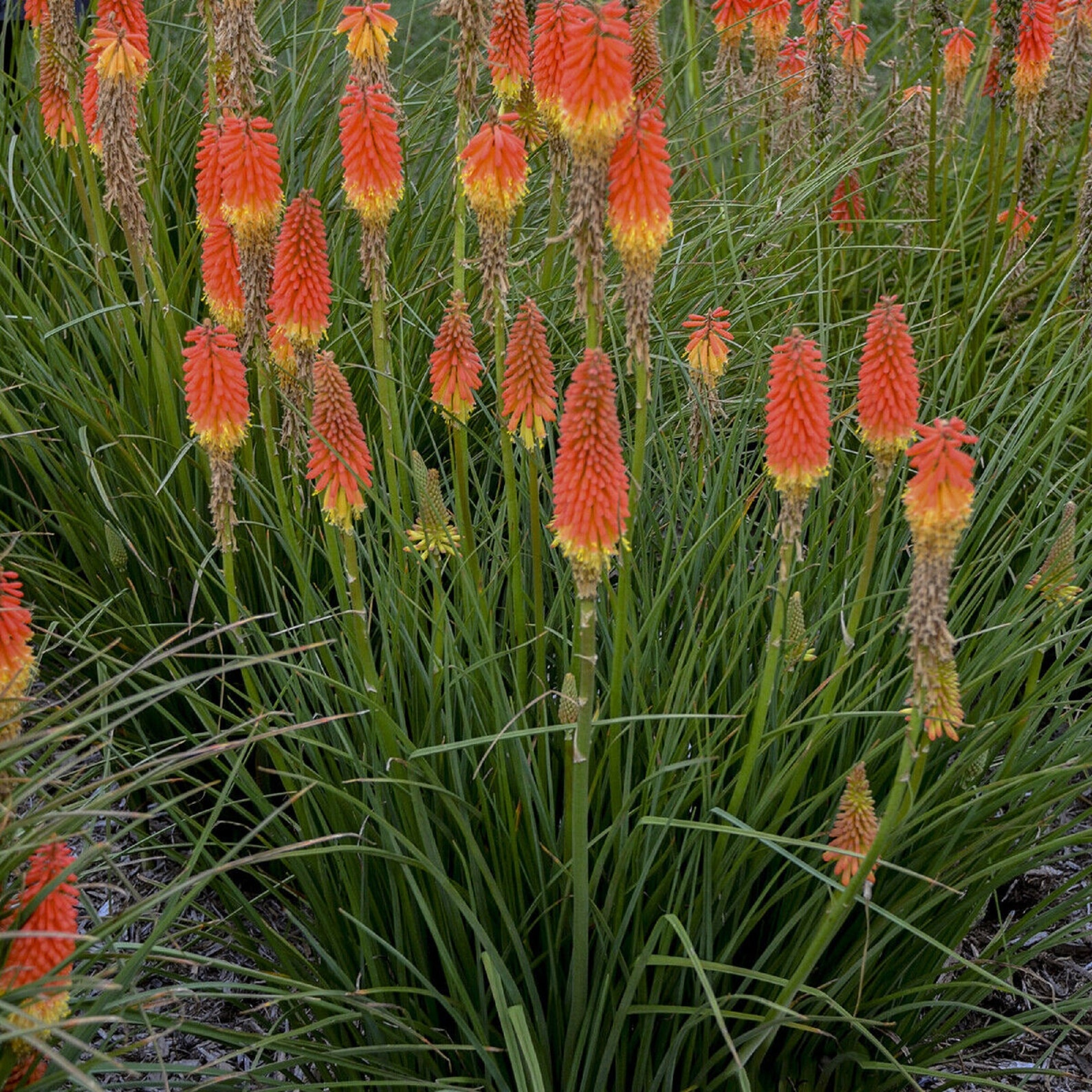
Red Hot Poker Kniphofia 'Jackpot' Live Perennial Plant Etsy
Planting red hot pokers. Here's how to plant red hot pokers: Step 1: Plant seeds and seedlings in early spring, after the last frost has passed. Mature plants can be transplanted into the garden at any time, but they do best when planted in spring as well. However, seeds and seedlings are more common to plant, due to the size mature plants can.
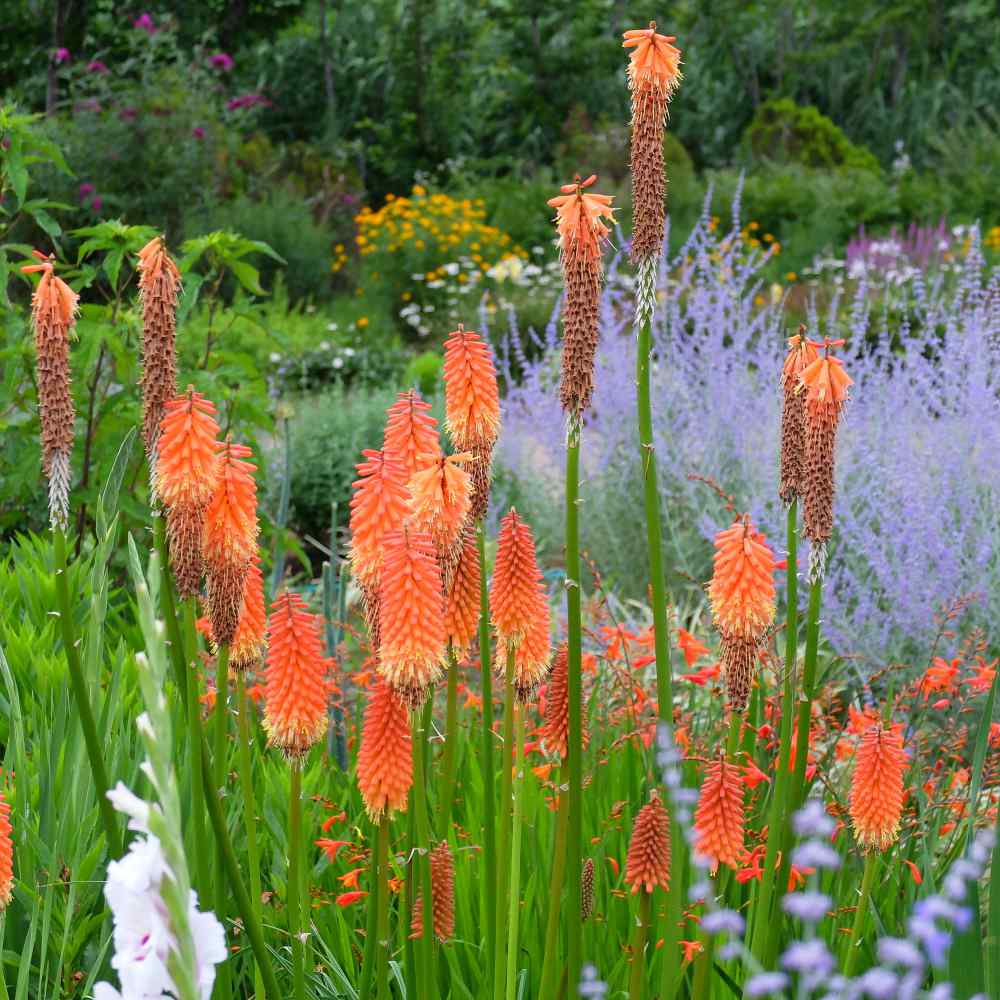
Red Hot Poker Seed Kniphofia Uvaria Flower Seeds
Red hot poker plants, also known as Kniphofia or torch lilies, are a popular and striking perennial that can add a burst of color to any garden. These plants are native to Africa and are named for their tall, spiky flowers that resemble a fiery poker. They come in a range of colors, from bright red and orange to yellow and green.

red hot poker Google Search Lily seeds, Flowers perennials, Garden flowers perennials
For this reason, seeds may not grow true to the parent plant. To grow the Red Hot Poker variety you want, grow seeds of a named variety purchased from a nursery or garden center. Germination is said to take place in 21 to 28 days at 70° to 75° F. In addition to seed, the garden center may have bare roots of Red Hot Poker available.

HOW TO GROW RED HOT POKER FROM SEED The Garden of Eaden
Kniphofia Colourful and exotic-looking, red-hot pokers flower over many months and make spectacular garden plants. They do well in coastal gardens and can be very long-lived. Quick facts Common name Red-hot poker Latin name Kniphofia Group Perennial Flowering time March to November Planting time March and April
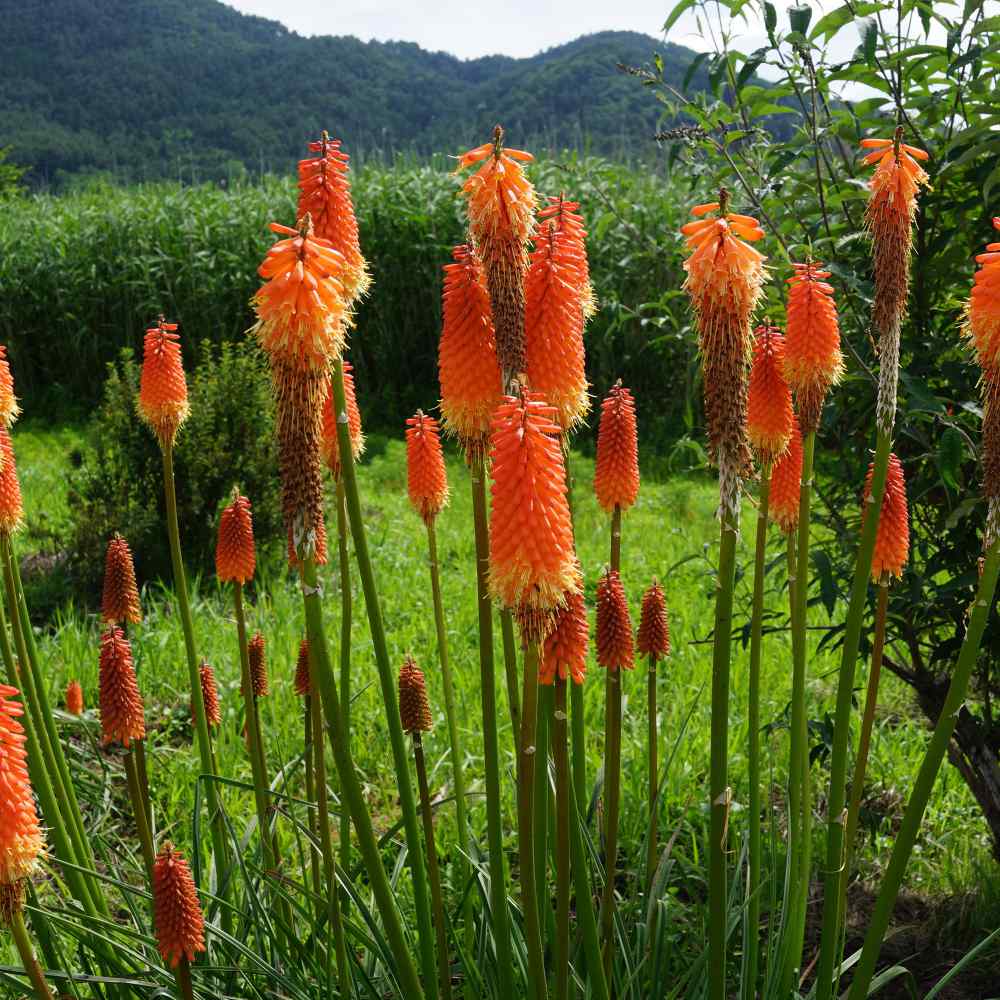
Red Hot Poker Seed Kniphofia Uvaria Flower Seeds
Kniphofia ( / nɪpˈhoʊfiə /, [2] / nɪˈfoʊfiə / [3]) is a genus of perennial flowering plants in the family Asphodelaceae, first described as a genus in 1794. [4] The species are native to Africa. Common names include tritoma, red hot poker, torch lily and poker plant . Description The genus has herbaceous and evergreen species.
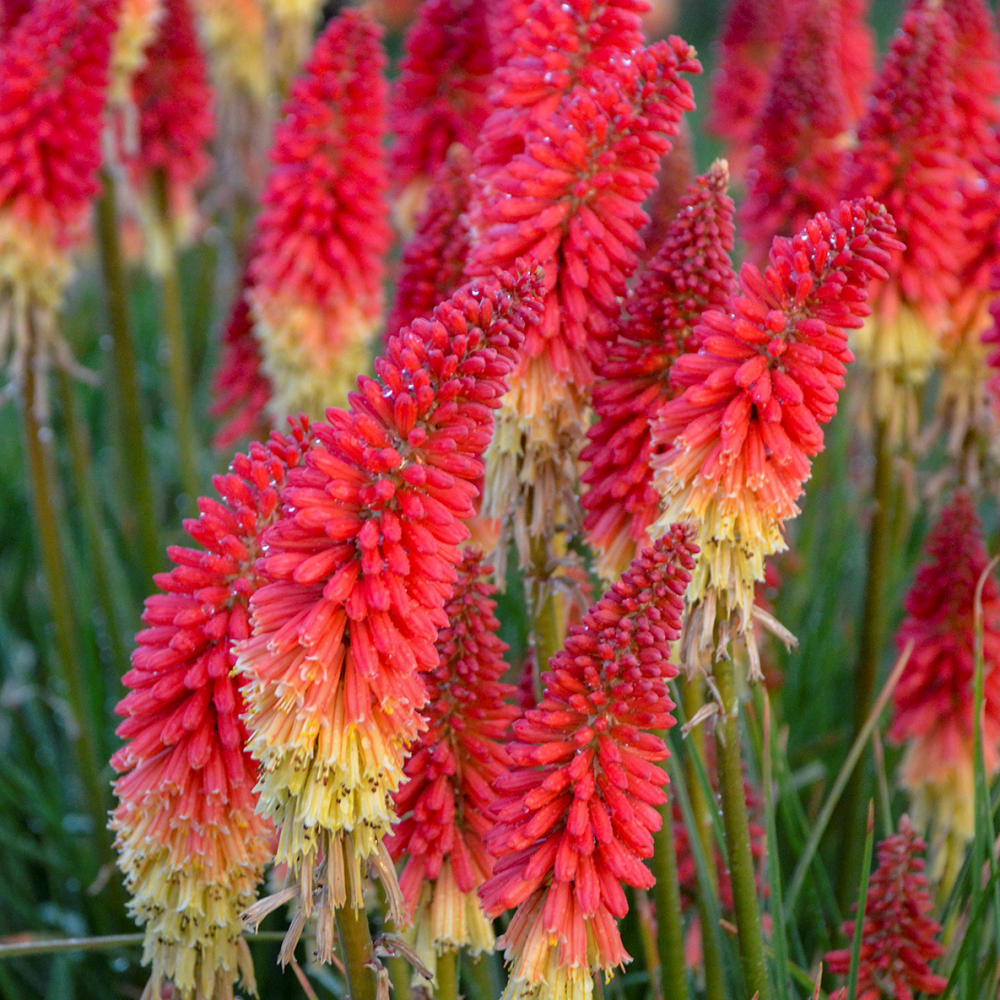
Cottage Farms Direct Perennials Pyromania™ Red Hot Poker Kniphofia Collection 3pc
last updated June 19, 2021 Red hot poker plants are exotic beauties in the garden, but extremely easy to grow. The bright, wand-like flowers are loved by hummingbirds, and always please gardeners with their low-maintenance ways. When the correct time arrives, you'll want to start cutting back red hot poker plants.

Red hot poker Flowers, Plants, Garden
Red hot pokers ( Kniphofia) are herbaceous perennials prized for their tall, showstopping flower spikes in bright red, orange, yellow, and other colors. They are also commonly known as torch lilies, and though they do share some characteristics they are not true lilies (i.e., they are not members of the Liliaceae family).

Kniphofia 'Red Hot Poker' Plant Red hot poker plant, Yellow perennials, Flower seeds
Red hot pokers are a great option if you're looking for the one of the best drought-tolerant plants to add your garden, and once established, they will enjoy long and characterful lives. Add color and shape with these red hot poker varieties We've selected 16 different red hot poker varieties to show the range of shapes, sizes and colors available.

Pyromania Hot and Cold Red Hot Poker Plant Addicts
By Charlie Nardozzi. If you're looking for a stunning plant to add an accent to your sunny flower border, consider the Red Hot Poker plant. There are more than 70 species of Kniphofia or the Torch Lily from South Africa, but few have made it into the commercial trade.

Cottage Farms Direct Perennials Pyromania™ Red Hot Poker Kniphofia Collection 3pc
Sun Perennials are Low Maintenance, Tolerant Plants - Iris, Peonies, Daylilies & More. Breck's - Bulbs Direct to You from Holland Since 1818. Enhance Your Garden - Brecks.com.

Kniphofia Amazing Fun Red Hot Poker Plant Easy To Grow Bulbs
This South African native is in the lily family. It grows 2 to 5 feet tall and produces large stalks of red, orange, yellow, cream or pink colored, tubular flowers that droop like torches. When & Where to Plant Red Hot Poker Light: Red hot poker plant blooms best in full sun, but tolerates light afternoon shade in hot climates.
:max_bytes(150000):strip_icc()/red-hot-poker-plants-2131856_07-23c5e73296474cdfa04856b54e37ed0b.jpg)
How to Grow and Care for Red Hot Poker Plants
Very floriferous, Kniphofia 'Joker's Wild' (Red Hot Poker) is a clump-forming perennial boasting tall spikes of tubular, very bright, deep orange flowers from early to late summer. Blooming in succession, the flower spikes are borne on stout flowering scapes which rise above a large, robust clump of arching blue-green leaves.
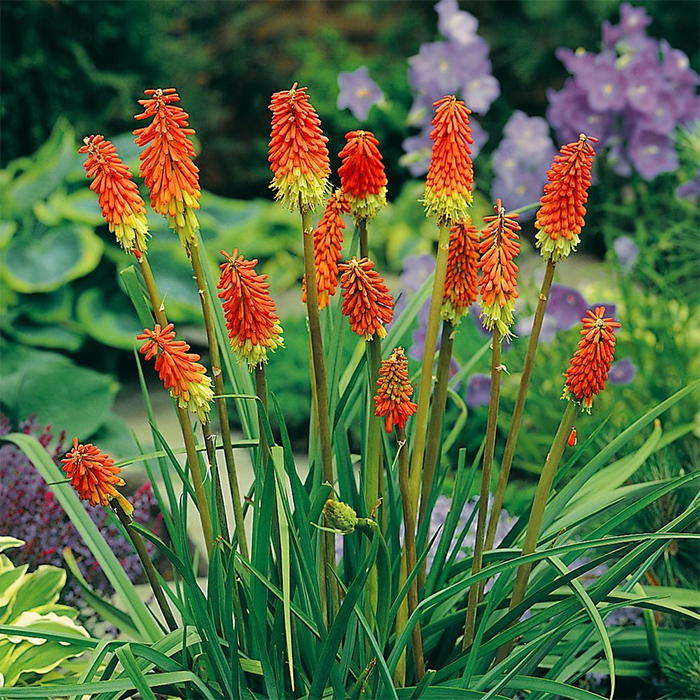
Red Hot Poker Plants On Sale at Best Prices Shop Now
Plant varieties of red hot poker plants that bloom at different times to extend bloom time from early summer to mid fall. Create a tropical-themed border using red hot poker plants in combination with other bold, tropical-looking plants such as banana, canna lilies, elephant ears, lantana, coleus and hibiscus.